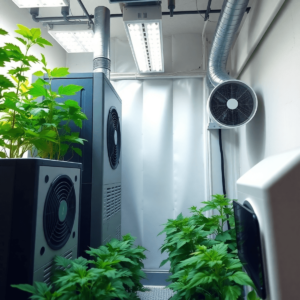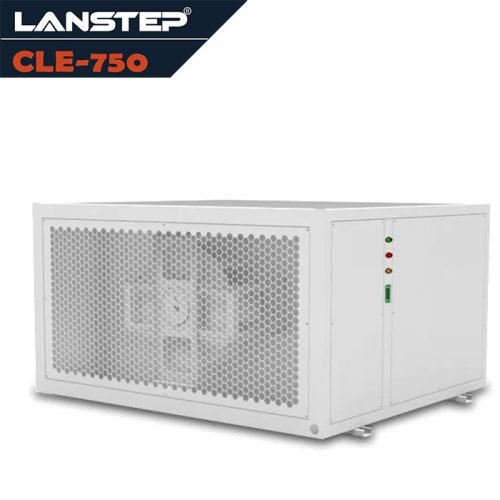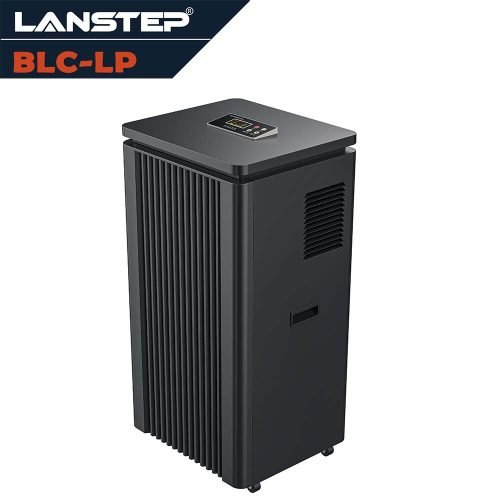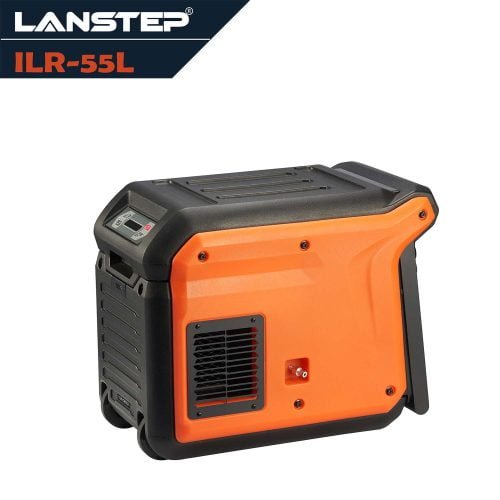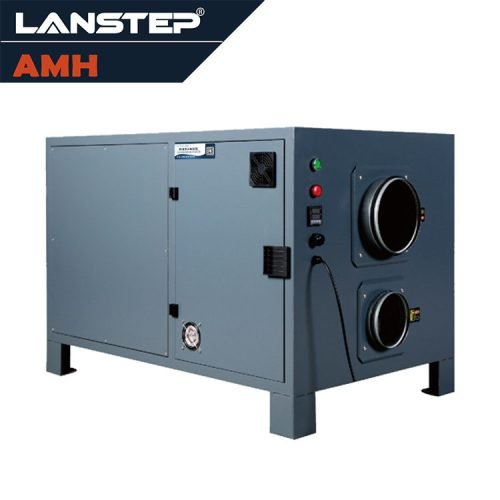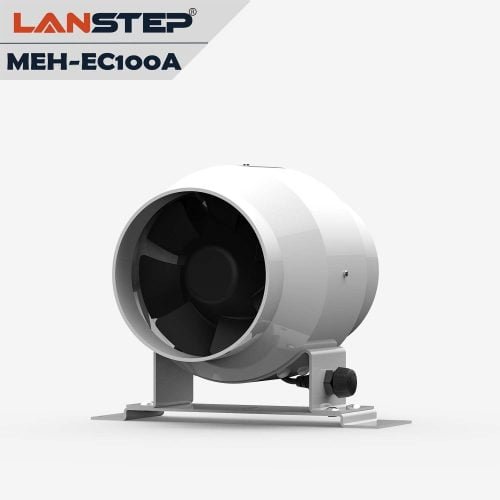Introduction
In the dynamic realm of cannabis cultivation, mastering the art of proper drying techniques stands as a cornerstone of excellence. This critical phase transcends mere post-harvest processing – it represents the delicate orchestration between preserving potency and enhancing the sophisticated flavor profile that discerning consumers demand. At the heart of this transformative process lies the precision of humidity control, a factor that fundamentally shapes the destiny of your carefully nurtured harvest.
As we navigate the complexities of modern cannabis production, how do we ensure our drying methods align with the industry’s relentless pursuit of quality? The answer lies in understanding that each moisture molecule plays a pivotal role in the intricate dance of preservation. We must embrace the technical sophistication required to maintain optimal environmental conditions, recognizing that humidity management isn’t just a variable – it’s the master key that unlocks the full potential of your cultivation efforts.
Together, we’re revolutionizing traditional approaches to cannabis curing, implementing innovative solutions that elevate industry standards while honoring time-tested principles. The future of cannabis excellence depends on our ability to perfect these crucial post-harvest protocols, ensuring that every batch reaches its maximum potential.
Why Humidity Matters in Cannabis Processing
Humidity plays a pivotal role in preserving cannabis quality during the drying and curing process. Understanding its impact can mean the difference between premium-grade product and compromised quality.
Risks of Improper Humidity Levels
Too High Humidity (Above 65%):
- Promotes harmful mold growth
- Increases risk of bud rot
- Creates breeding ground for bacteria
- Can lead to complete crop loss
- Compromises product safety
Too Low Humidity (Below 45%):
- Causes excessive terpene evaporation
- Results in brittle, crumbly buds
- Creates harsh smoking experience
- Reduces overall potency
- Diminishes market value
Benefits of Optimal Humidity Control
The sweet spot for humidity levels (45-55%) helps:
- Preserve essential terpene profiles
- Maintain cannabinoid stability
- Ensure proper metabolic processes
- Prevent degradation of THC
- Enhance shelf life
“Proper humidity management is not just about preservation—it’s about protecting your investment and ensuring consumer satisfaction.”
Impact on Chemical Composition
Humidity directly affects the molecular structure of cannabis compounds:
- Influences trichome integrity
- Affects chlorophyll breakdown
- Maintains proper moisture content
- Supports enzymatic processes
- Preserves aromatic properties
Understanding these relationships helps cultivators maintain optimal conditions throughout the entire post-harvest process, ultimately leading to superior product quality and consistency.
The Role of Dehumidifiers
This is where dehumidifiers come into play—a modern solution to an age-old problem. Dehumidifiers create an environment with precise humidity control, protecting against potential issues and improving overall quality. By using these devices, growers can guarantee that their harvest reaches its highest potential, delivering excellence and consistency in every batch.
Understanding Humidity Requirements for Cannabis Drying
The quest for ideal humidity levels in cannabis cultivation demands precision and expertise. While the optimal range of 50-60% relative humidity serves as the golden standard, several critical factors influence this delicate process:
Temperature Correlation
- Maintain temperatures between 65-75°F (18-24°C)
- Every 1°F change affects relative humidity by approximately 2%
- Higher temperatures accelerate moisture evaporation
Time-Based Humidity Adjustments
- Initial drying phase: 60% RH
- Mid-drying phase: 55% RH
- Final drying phase: 50% RH
“Proper humidity control during drying is not just about reaching numbers—it’s about maintaining a consistent environment that promotes optimal moisture extraction while preserving valuable compounds.”
Key Indicators of Proper Humidity Levels:
- Stems snap cleanly rather than bend
- Exterior feels dry but not brittle
- Inner buds retain slight sponginess
- Even coloration throughout the product
This careful balance ensures proper curing while preventing common issues like mold formation or over-drying. Monitoring tools such as hygrometers become essential companions in maintaining these precise conditions throughout the drying cycle.
Effects of High and Low Humidity:
- High Humidity: Retaining excessive moisture can lead to mold growth, which threatens both the potency and safety of cannabis. It hampers the drying process, creating a breeding ground for unwanted microorganisms.
- Low Humidity: Conversely, rapid moisture loss at lower humidity levels risks the degradation of cannabinoids and terpenes—essential compounds contributing to flavor, aroma, and therapeutic effects. This can result in harsh smoke and diminished efficacy.
Role of Psychrometrics:
Understanding psychrometrics—the study of air properties such as temperature and humidity—is essential for effective moisture control during drying. By understanding these principles, cultivators can adjust conditions to maintain optimal humidity levels, ensuring that each cannabis batch meets strict quality standards.
The science behind psychrometrics explains how air interacts with water vapor, giving cultivators an advantage in optimizing drying setups. As we explore new ways to improve the industry, understanding these factors becomes crucial for maintaining excellence in cannabis processing.
To achieve the best humidity control during both the growing and drying stages, investing in effective dehumidification solutions is necessary. For example, the CLE380, known as the most economical dehumidification solution for cannabis grow rooms, can remove 380 pints of moisture per day at RH60% 80℉. This level of dehumidification ensures healthy plant growth by keeping humidity levels ideal.
Additionally, learning about advanced moisture management techniques like those discussed in this guide to advanced structural drying can further improve your cannabis drying process.
The Role of Dehumidifiers in Cannabis Drying
The journey towards high-quality cannabis is full of challenges, and one of the biggest is keeping the right humidity levels during the drying process. Dehumidifiers are a crucial tool in this effort, acting as protectors against mold growth and ensuring the preservation of cannabis quality. By effectively controlling moisture levels, dehumidifiers not only safeguard the crop but also improve its overall potency and flavor.
Types of Dehumidifiers
Understanding the variety of dehumidifiers available can empower you to make informed decisions tailored to your specific needs. Each type comes with unique features that cater to different aspects of cannabis drying:
- Refrigerant Dehumidifiers: These are the most common and work by cooling air to condense moisture. They are efficient in moderately humid conditions but may struggle in colder environments.
- Desiccant Dehumidifiers: Utilizing a chemical desiccant, these devices excel in low-temperature settings and can operate efficiently even at lower humidity levels.
- Centrifugal Dehumidifiers: Known for their powerful airflow capabilities, they use centrifugal force to separate moisture from the air. This type is especially effective in larger spaces.
- Ultrasonic Dehumidifiers: Employing ultrasonic waves, these devices are energy-efficient and quiet, making them suitable for smaller or specialized drying rooms.
One excellent option for those seeking a professional-grade solution is the CLE750, an A++ energy-efficient dehumidifier designed specifically for grow rooms. It removes up to 750 pints of moisture per day at RH60% 80℉, ensuring optimal humidity control which results in healthier plant growth.
By selecting the appropriate dehumidifier, like the CLE750, you can achieve optimal energy efficiency while safeguarding your cannabis against quality degradation.
Best Dehumidifiers for Cannabis Drying
Choosing the best dehumidifier for cannabis drying is crucial to ensuring optimal quality and preservation. Among the top contenders in this niche, Quest, Anden, Surna, and LANSTEP, consistently stand out due to their high performance and reliability.
Quest Dehumidifiers
Quest dehumidifiers are known for their sturdy construction and efficiency. Their models are specifically designed to handle large-scale operations, making them ideal for spacious cannabis drying rooms. They offer:
- High Capacity: Capable of removing significant amounts of moisture per day.
- Energy Efficiency: Designed to minimize energy consumption while maximizing output.
- Durability: Built to withstand the rigors of continuous operation.
Anden Dehumidifiers
Anden’s offerings cater to both small and large operations, providing versatile solutions tailored to different needs. Their dehumidifiers feature:
- Precision Control: Accurate humidity control to maintain optimal drying conditions.
- Compact Design: Efficient space utilization, perfect for smaller setups.
- User-Friendly Interface: Simple controls that make monitoring and adjustments straightforward.
Surna Dehumidifiers
Surna specializes in advanced climate control systems, with their dehumidifiers being a testament to innovation. Key features include:
- Advanced Technology: Integration with intelligent systems for seamless operation.
- Customizable Settings: Adaptable to specific environmental requirements of cannabis drying rooms.
- Quiet Operation: Ensures minimal disruption, maintaining a peaceful environment.
LANSTEP Dehumidifiers
LANSTEP dehumidifiers use modern TPER technology that saves energy and works well in different conditions. This makes them perfect for humid places like Durban, where controlling moisture is important. Key benefits include:
- Energy Savings: Uses 40% less power compared to regular models.
- Easy to Install: Can be set up with or without ducts to suit your needs.
- Smart Controls: Automatically adjusts settings based on room conditions.
To choose the best dehumidifier, think about your room size, how much power you want to use, and what moisture problems you need to solve. With these quality brands available, you can easily create the dry environment you need.
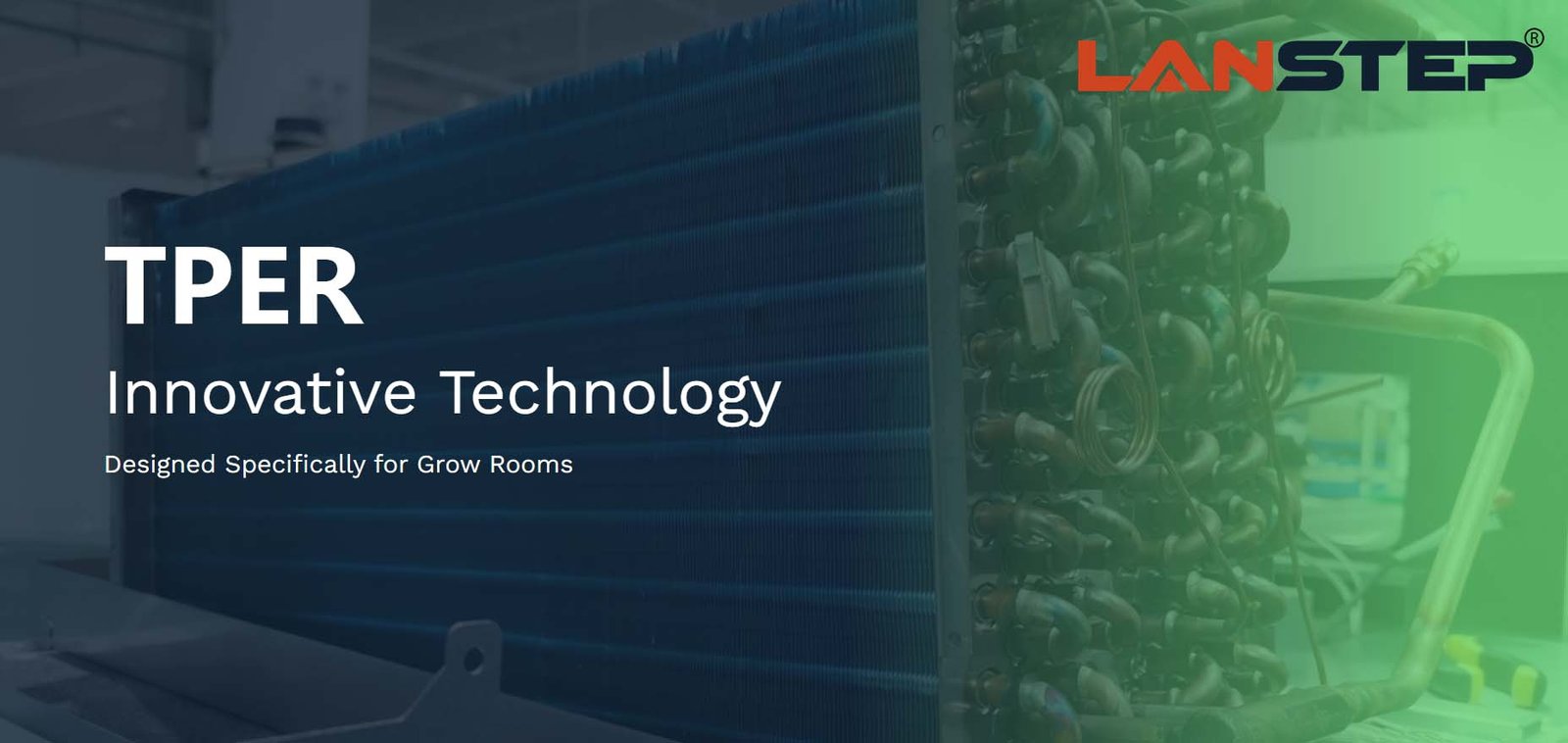
Setting Up Your Cannabis Drying Room
Creating the perfect environment for drying cannabis requires careful attention to detail, especially when it comes to temperature control and lighting. These elements are crucial in preserving the cannabinoid and terpene profiles that define quality.
Key Elements for an Effective Drying Room Setup
1. Temperature Control
Maintaining a consistent temperature of around 60-70°F (15-21°C) is crucial. This range helps prevent the degradation of cannabinoids and terpenes, ensuring that the final product retains its potency and flavor.
2. Lighting
While it’s essential during the growing phase, lighting should be minimal during drying. Excessive light can degrade cannabinoids, so aim for low light conditions to protect these sensitive compounds.
Recommended Placement of the Dehumidifier
Optimal placement of your dehumidifier is equally vital in a successful drying room setup. Strategic positioning enhances performance and ensures consistent moisture removal throughout your drying space.
Primary Placement Considerations
- Away from Walls and Large Objects
- Maintain 3-4 feet of clearance around the unit
- Ensure both intake and exhaust vents remain unobstructed
- Avoid placing near hanging cannabis to prevent uneven drying
- Consider elevated placement on a stable platform for better air distribution
- Central Location Benefits
- Creates uniform air circulation patterns
- Reduces cold spots and humidity pockets
- Enables consistent drying across all plant material
- Pro tip: Use airflow indicators to verify even distribution
- Air Intake Positioning
- Position near (but not directly at) air intake sources
- Maintain 6-8 feet distance from exhaust vents
- Consider using portable fans to direct airflow
- Monitor air movement patterns with smoke tests
Additional Placement Factors
- Room Layout Considerations
- Account for door locations and traffic patterns
- Consider electrical outlet accessibility
- Plan for condensate drainage requirements
- Allow space for maintenance access
- Height Positioning
For rooms with vertical space, elevate the unit 2-3 feet off the ground to optimize air circulation and reduce dust intake.
- Multiple Unit Setup
- Space units evenly throughout larger rooms
- Create overlapping coverage zones
- Avoid placing units directly opposite each other
- Consider staggered operation for energy efficiency
These strategic placement guidelines help create an efficient drying environment while maximizing your dehumidifier’s performance and longevity.
Best Practices for Using a Dehumidifier in Cannabis Drying Rooms
Mastering the art of drying cannabis hinges on the effective use of dehumidifiers. Implementing best practices can significantly enhance your operational efficiency and elevate the quality of your harvest.
Running the Dehumidifier at Full Capacity During Initial Phases
During the initial stages of drying, setting your dehumidifier to full capacity is crucial. This ensures rapid reduction of excess moisture, creating an environment that prevents mold formation and preserves the natural terpenes and cannabinoids. The CLE500, renowned for its energy efficiency and ability to remove up to 500 pints of moisture per day, is particularly adept in this phase, reducing operational costs while maintaining high performance.
Critical First 48 Hours
The first 48 hours are particularly critical for moisture removal, as freshly harvested cannabis contains approximately 80% water content. During this period:
- Maintain continuous operation at maximum capacity
- Monitor moisture reduction every 4-6 hours
- Adjust airflow patterns if needed for uniform drying
Optimal Performance Metrics
For maximum efficiency during initial drying phases:
- Temperature Control: Maintain 60-70°F (15-21°C)
- Target Humidity: Aim for 55-65% relative humidity
- Air Exchange Rate: 3-5 times per hour
Pro Tip: Position your hygrometer at plant level for the most accurate readings during this crucial phase.
Energy Management Strategies
While running at full capacity, implement these energy-saving techniques:
- Staged Operation: Use multiple units in rotation for larger rooms
- Smart Scheduling: Align peak operation with off-peak electricity rates
- Heat Recovery: Utilize expelled warm air for maintaining optimal room temperature
The CLE500’s advanced moisture removal capabilities shine particularly bright during these intensive initial phases, with its precision humidity control and intelligent defrost system ensuring consistent performance even under heavy moisture loads.
Regular Monitoring with Hygrometers
Ensuring optimal humidity levels requires regular monitoring using advanced hygrometers. These tools provide real-time data, allowing you to make necessary adjustments to your dehumidifier settings promptly. Maintaining a consistent environment not only enhances the drying process but also safeguards against quality degradation.
Key Monitoring Practices:
- Place multiple hygrometers at different heights for comprehensive readings
- Document humidity levels every 2-3 hours during the first 48 hours
- Keep detailed logs to identify patterns and optimize future cycles
Advanced Hygrometer Features to Consider
- Bluetooth Connectivity – Access readings remotely via smartphone
- Data Logging Capability – Track historical humidity patterns
- Temperature Integration – Monitor both humidity and temperature simultaneously
- Calibration Options – Ensure accuracy through regular calibration
Pro Tip: Consider investing in hygrometers with audible alerts that notify you when humidity levels fall outside your preset range.
Strategic Placement Guidelines
- Position primary sensors at plant level for most relevant readings
- Install secondary units near air intake and exhaust points
- Keep sensors away from direct airflow from dehumidifiers
- Maintain at least 2 feet distance from walls and corners
Your monitoring system’s effectiveness largely depends on the quality and placement of your hygrometers. High-precision digital models with ±2% accuracy ratings offer the reliability needed for professional operations.
Maintenance of Dehumidifiers
To achieve long-term success in drying weed with a dehumidifier, regular maintenance is non-negotiable. Keeping filters clean and checking for any mechanical issues will extend the lifespan of your equipment and ensure it operates at peak efficiency.
Essential Maintenance Tasks
- Weekly Filter Inspection: Remove and clean primary filters to prevent dust accumulation
- Monthly Coil Cleaning: Inspect and clean condenser coils to maintain optimal heat exchange
- Drainage System Check: Verify drain lines are clear and properly positioned
- Sensor Calibration: Test humidity sensors every 3-4 months for accuracy
Professional Service Intervals
Implement a structured maintenance schedule:
- Quarterly professional inspections
- Bi-annual deep cleaning
- Annual component replacement as needed
- Regular performance testing
For those seeking the best dehumidifier for greenhouse environments, models like the CLE750 offer robust performance tailored to meet unique demands. Their intelligent control systems adjust operational parameters, ensuring superior adaptation to changing environmental conditions.
Advanced Features to Monitor
- Smart Diagnostics: Built-in systems that alert you to potential issues
- Energy Efficiency Tracking: Monitor power consumption patterns
- Automatic Defrost Cycles: Prevent ice buildup on coils
- Variable Fan Speed Control: Adjust airflow based on humidity levels
Pro Tip: Keep a maintenance log to track performance metrics and identify potential issues before they become problems.
These practices underscore the importance of precision and adaptability in cannabis drying, setting a standard for quality that resonates throughout every phase of cultivation.
The Drying Process Explained
To achieve the best results in drying cannabis, it’s important to understand both the timeline and the methods used. Ideally, the drying process should take about one week. This time frame allows the cannabis to keep its potency, aroma, and flavor while minimizing the chances of mold growth.
Different Drying Methods:
1. Line Drying
In this method, whole plants or individual branches are hung upside down on wires or ropes. This setup allows air to flow freely around the buds, promoting even drying. Line drying is often preferred for larger setups due to its simplicity and effectiveness.
Pro Tip: Maintain 12-18 inches of space between hanging branches to ensure optimal airflow and prevent moisture accumulation.
Key Benefits of Line Drying:
- Natural gravitational pull helps maintain bud structure
- Reduces handling and potential damage
- Accommodates large quantities efficiently
- Allows for easy inspection during the drying process
2. Screen Drying
If you’re short on space, screen drying can be a great option. Here, cannabis is spread out on screens or racks, allowing air to circulate from all directions. This ensures that each bud gets direct exposure to airflow, resulting in consistent drying.
Screen Drying Considerations:
- Use food-grade stainless steel or food-safe mesh screens
- Rotate buds daily to prevent flat spots
- Clean screens regularly to prevent contamination
- Stack screens vertically to maximize space utilization
Environmental Control Factors
The role of a dehumidifier in these processes cannot be overstated. It actively manages humidity levels, which is crucial during the sweating process. This critical phase involves redistributing internal moisture throughout the buds. By using precise dehumidification techniques, you can control this process and prevent over-drying while still preserving the integrity of active compounds.
Optimal Environmental Parameters:
- Temperature: Maintain 60-70°F (15-21°C)
- Humidity: Start at 60% and gradually reduce to 45%
- Air circulation: Gentle, indirect airflow
- Light exposure: Minimal to none
Choosing the right drying method depends on your specific goals and limitations. However, incorporating a dehumidifier into your setup will consistently improve results by maintaining optimal conditions throughout the drying process. Regular monitoring with digital hygrometers and thermometers helps ensure these conditions remain stable.
Challenges and Solutions During Drying
Drying cannabis comes with its own set of challenges, especially in areas with high humidity like Durban. High humidity can make it difficult to dry cannabis properly, leading to issues such as mold growth and compromised quality. This is particularly important to consider when drying cannabis with a dehumidifier, as maintaining the right moisture levels is crucial.
In places with high humidity, it’s essential to find a way to maintain the right moisture levels. Cannabis flowers are sensitive to their environment and require a controlled setting to achieve the desired dryness without losing potency or flavor. This is where innovative dehumidification solutions become important.
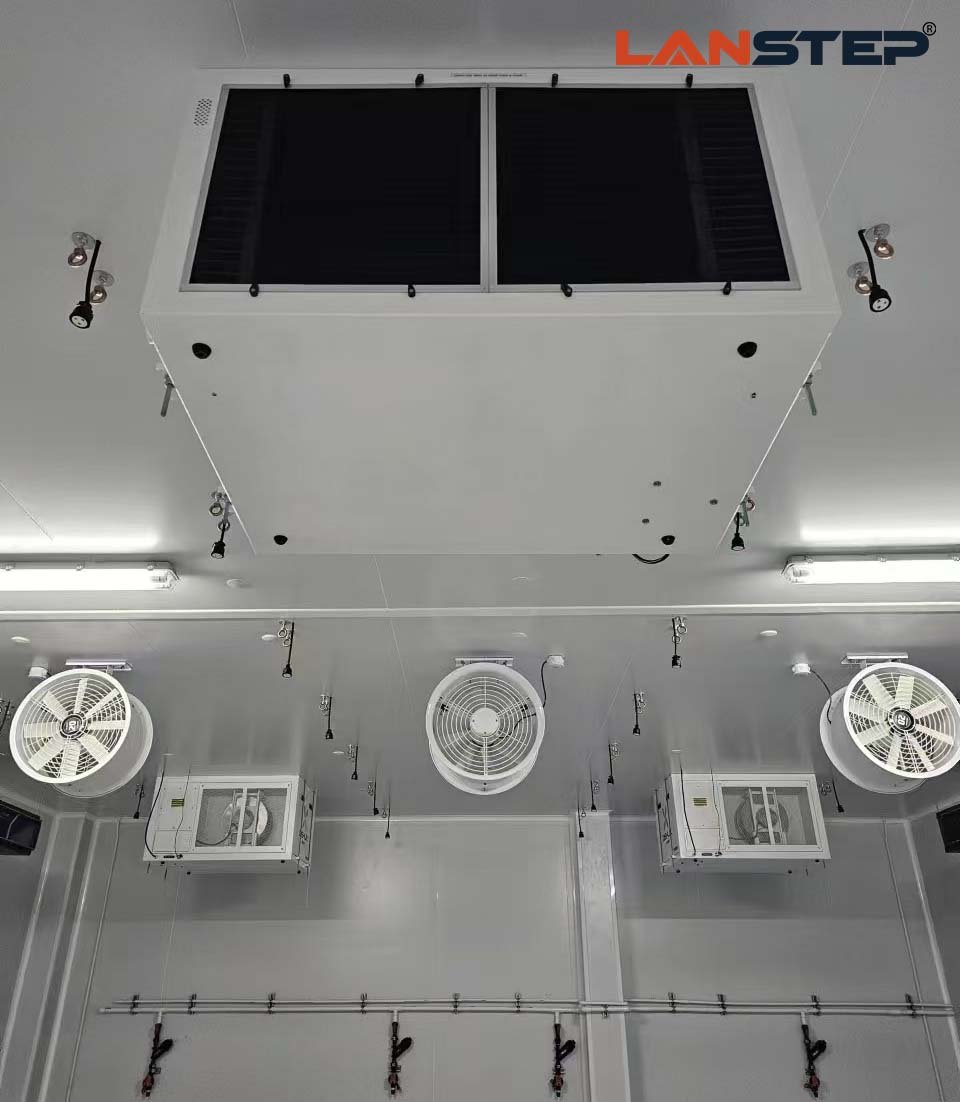
Common Challenges:
- External Humidity: The ongoing high humidity in places like Durban can introduce excess moisture into drying rooms.
- Inconsistent Drying: Uneven moisture levels can result in patchy drying, affecting the overall quality of the cannabis.
- Mold and Mildew Risks: Too much moisture creates an ideal environment for mold to grow, putting both yield and safety at risk.
Effective Solutions:
- Implement Advanced Dehumidifiers: Using energy-efficient models like the CLE Series can significantly reduce energy consumption while keeping humidity levels just right. These dehumidifiers are essential for effectively drying cannabis with dehumidifier technology.
- Smart control systems adjust settings based on changes in the environment, ensuring consistent performance.
- Regular Monitoring: Use hygrometers to constantly measure temperature and humidity levels.
- Make proactive adjustments to dehumidifier settings based on data trends and forecasts.
- Room Design Considerations: Make sure drying rooms are properly insulated and have good air circulation to minimize the influence of external humidity.
- Where possible, use barriers or seals to prevent outside air from entering.
By facing these challenges directly with strategic solutions, such as drying cannabis with dehumidifier systems, we can ensure high-quality cannabis production that overcomes environmental obstacles.
Storage Options After Drying Cannabis
Preserving the quality of dried cannabis buds is crucial for maintaining its potency, aroma, and flavor. Proper storage techniques are essential to protect your harvest from environmental factors that can degrade its quality over time.
Best Practices for Storing Dried Cannabis:
- Sealed Containers: Utilizing airtight containers is the cornerstone of effective cannabis storage. Glass jars with rubber seals or vacuum-sealed bags are ideal choices. These containers prevent air exposure, which can lead to oxidation and loss of cannabinoids and terpenes.
- Temperature Control: Store your cannabis in a cool environment, ideally between 60-70°F (15-21°C). Excessive heat accelerates the degradation of cannabinoids, reducing the overall effectiveness and sensory experience. Avoid storing it in places that are too warm or exposed to direct sunlight, such as near ovens or windows.
- Humidity Regulation: Maintaining relative humidity (RH) levels between 55-62% is vital. This range ensures that the cannabis remains neither too dry nor too moist, preventing mold growth and preserving texture. Humidity packs can be placed inside storage containers to stabilize RH levels. Consider using a cannabis drying room with controlled humidity to ensure optimal conditions during the drying process.
- Darkness: Light exposure can lead to the breakdown of cannabinoids, particularly THC. Keeping cannabis in a dark place helps preserve its psychoactive properties and aroma profiles.
By adhering to these cannabis storage tips, you ensure that your dried cannabis retains its desired qualities until it is ready for use. These practices not only maintain freshness after drying but also enhance the longevity of your product.
Conclusion
When it comes to drying cannabis, precision and innovation are our greatest allies. By following best practices such as using a dehumidifier strategically, we can achieve superior cannabis quality.
Using a dehumidifier for drying cannabis allows us to create controlled environments that prevent mold growth and preserve terpenes. This not only enhances the overall experience but also ensures that each product reaches its full potential.
By adopting these practices and investing in intelligent systems like the CLE Series Dehumidifiers, you position yourself as a leader in the cannabis industry. This way, we can combine technology with tradition, making sure that every harvest reflects our dedication to quality and sustainability.
Let us stay committed to this goal, turning challenges into opportunities for growth and innovation.



